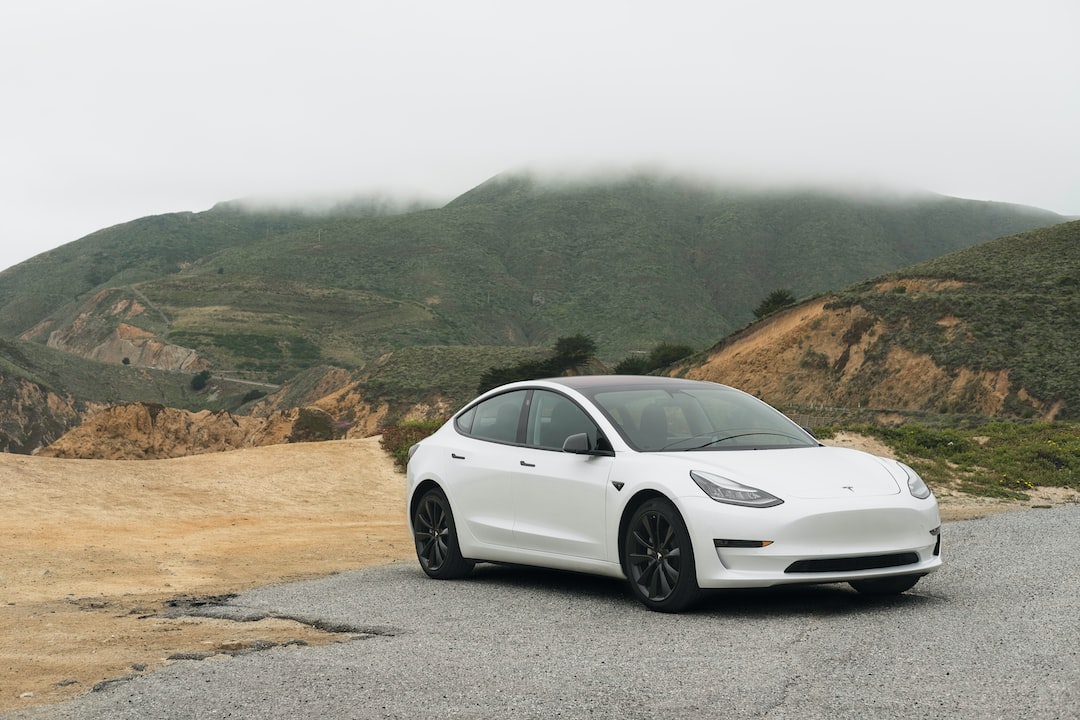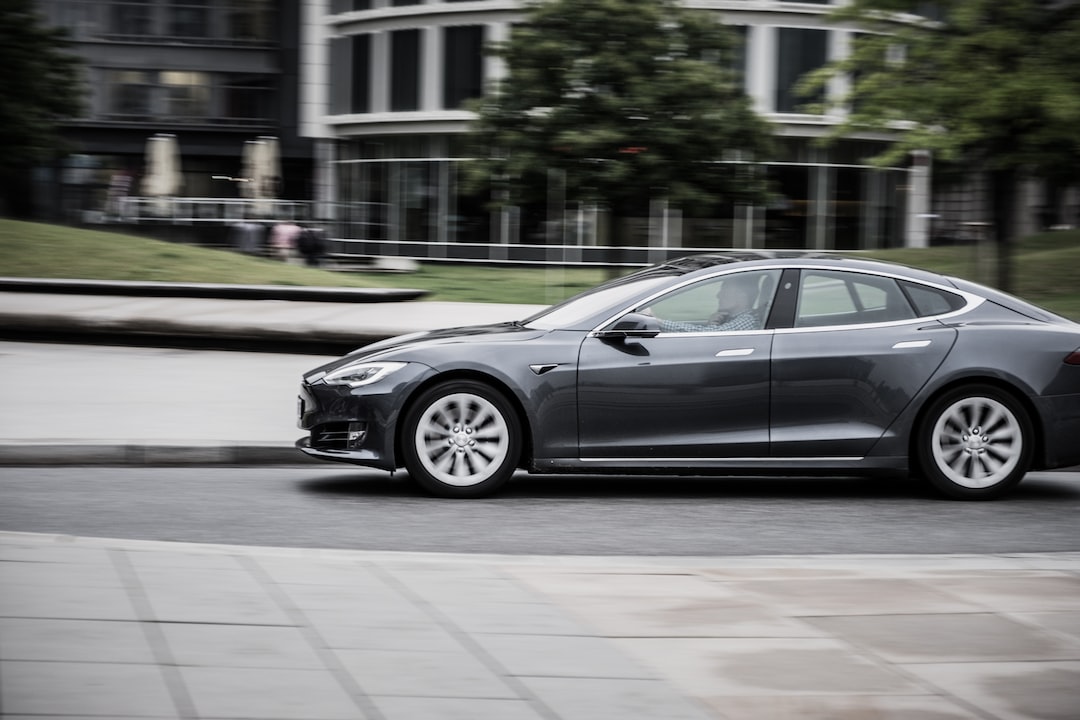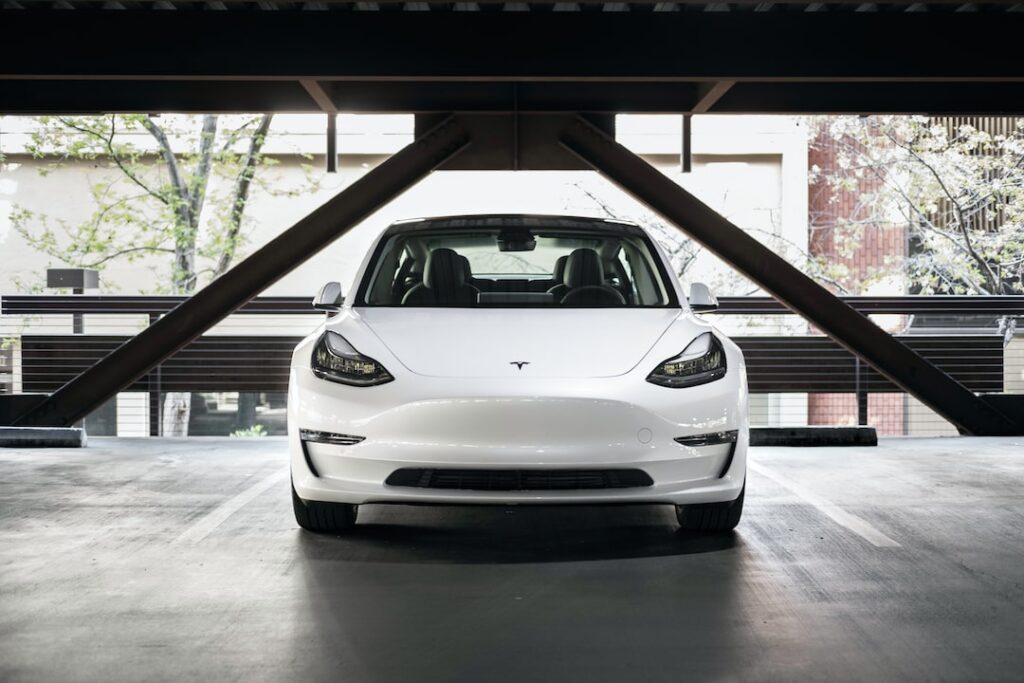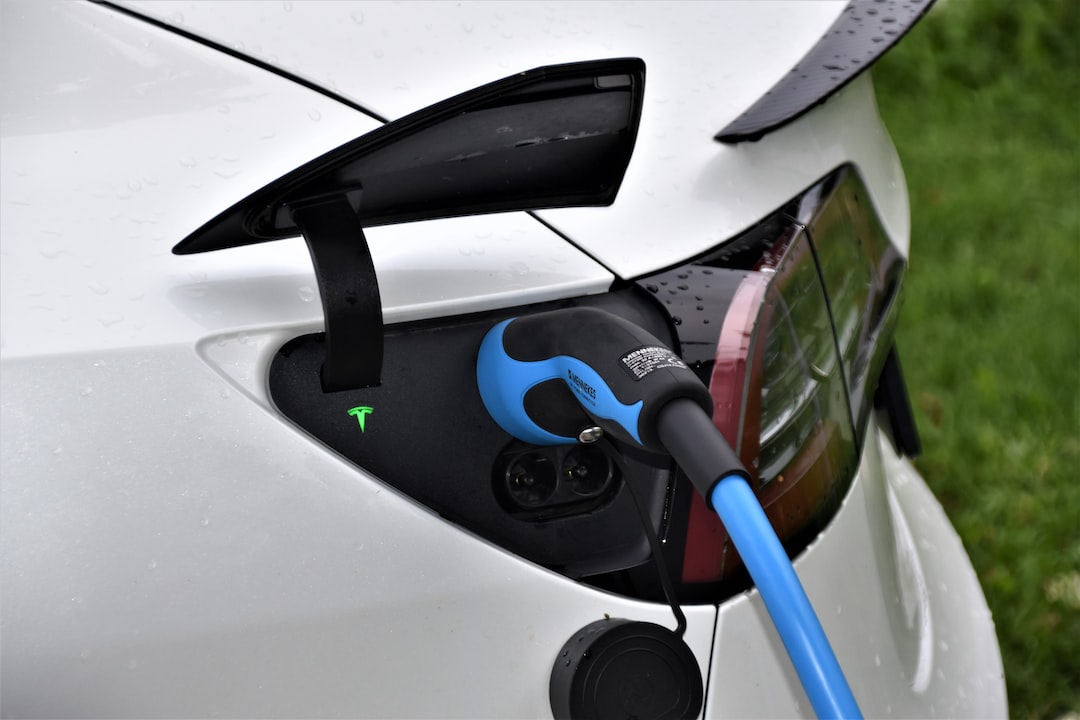
Photo by Charlie Deets on Unsplash. Rechargd.com is reader supported. We may collect a share of sales or other compensation from the links on this page. As an Amazon Associate, we earn from qualifying purchases.
Just a few years ago, the idea of owning an electric vehicle (EV) was still quite foreign to many. However, rapid technological advancements spearheaded by companies like Tesla have led to an increase in EV adoption across the globe. Many potential buyers, though, still have questions about charging their electric vehicles, and one of the most curious inquiries is whether or not it’s possible to charge a Tesla while driving. Let’s delve into this topic and explore the various factors at play.
You cannot charge a Tesla while driving directly through the vehicle’s external charging port. However, regenerative braking automatically charges the Tesla’s battery when decelerating, converting the car’s kinetic energy into stored electric power. This way, the battery can be charged indirectly during certain driving conditions.
Understanding Regenerative Braking
To properly address this question, it’s important first to understand the concept of regenerative braking – a feature offered in electric vehicles like Tesla. In my experience, this has been one of the most intriguing aspects of EV technology. So, what exactly is regenerative braking, and how does it work?
Simply put, regenerative braking is a method of recovering energy that would otherwise be wasted during conventional braking. When you apply the brakes in a traditional gas-powered vehicle, the kinetic energy of the moving car is converted into heat and dissipated into the atmosphere. In contrast, electric vehicles like Tesla harness this kinetic energy during braking and feed it back into the battery, extending the vehicle’s range.
While regenerative braking may not fully recharge your battery, it does provide a significant energy boost, especially during city driving, where frequent stops are common. This technology is crucial in reducing the frequency of charging events required for your Tesla.
How Effective is Regenerative Braking?
As exhilarating as it may sound, regenerative braking has some limitations. While it noticeably extends your Tesla’s range and even contributes to overall battery health, it is not a complete solution for charging your vehicle. It’s crucial to manage expectations and recognize that regenerative braking is not designed to provide a consistent means of keeping your battery fully charged.
Regenerative braking plays a secondary role to a primary charging method – whether at home, a public charging station, or a Tesla Supercharger. Nevertheless, some Tesla drivers have reported adding as much as 30% extra range through regenerative braking alone, confirming this technology’s significant contribution to your car’s overall performance and daily usability.
Are There Any Alternatives for Charging While Driving?
Understanding the limitations of regenerative braking naturally begs the question: Are there alternative solutions for charging a Tesla while driving?
Various teams and companies have explored the concept of dynamic wireless charging. Also known as inductive charging, this approach relies on the use of magnetic fields to transfer energy wirelessly, allowing a vehicle to charge as it moves over a road equipped with special coils.

While other options, such as Qualcomm’s Halo technology and WiTricity’s DRIVE, have demonstrated their potential to revolutionize EV charging, they remain in the experimental stages and have yet to be deployed on a large scale. Furthermore, widespread adoption hinges on updates to existing infrastructure and investments in research and development.
Another development option is the utilization of solar technology. For instance, several companies are experimenting with integrating solar panels into the roofs, hoods, and even the chassis of electric vehicles to harness solar energy efficiently.
Despite the promise of solar-powered EVs, challenges such as the efficiency of solar cells and the availability of sunlight remain. Thus, it is crucial to view these advancements as supplementary energy sources rather than immediate, large-scale solutions.
How Can I Maximize My Tesla’s Battery Range?
Considering that neither regenerative braking nor current alternative charging methods alone can keep your battery fully charged, one might wonder what steps can be taken to maximize the battery range of a Tesla vehicle. Here are several tips that I have found to be useful in my experience:
1. Precondition your Tesla: You can precondition your vehicle prior to setting off on your drive by using the Tesla mobile app, remotely activating the climate control system, or connecting to a charger. This process helps maintain a comfortable cabin temperature and improves the efficiency of your battery.
2. Reduce unnecessary weight: Keeping your vehicle free of unnecessary luggage and cargo is always a good idea. Additional weight increases power consumption and, in turn, reduces your overall range.
3. Check your tire pressure regularly: Underinflated tires increase rolling resistance and wear, hurting the car’s overall efficiency. Follow Tesla’s recommended tire pressure specifications.
4. Drive at a moderate speed: Higher speeds increase wind resistance, which can deplete your battery faster. Maintaining a steady, moderate speed can significantly extend your vehicle’s range.
(CONTINUE)
New Developments in Range Extension
While conventional methods of preserving battery life and making the most of regenerative braking remain relevant, it’s worth examining recent developments in range extension that seek to enable charging Tesla vehicles while driving.
Introducing Trailer-mounted Charging Solutions
One creative approach to charging a Tesla while driving has been the development of specialized trailer-mounted charging solutions. These chargers incorporate a range extender battery, which can be charged at home or via public charging stations, and are designed to provide auxiliary power to your Tesla while on the move. One notable example of such a product is the Eclipse Power trailer.

This system connects to the vehicle’s charging port and supplies power while driving, thereby reducing the reliance on regenerative braking for longer trips. However, this solution is not without its challenges, such as added weight, reduced maneuverability, and the need to find convenient trailer parking spots.
The Emergence of Battery Swapping Stations
Another concept that has gained traction in the EV industry is battery swapping stations. These facilities enable drivers to quickly exchange their depleted Tesla battery pack with a fully charged one, significantly reducing the time it takes to “refuel” and continue driving.
Tesla has previously experimented with battery-swapping technology, completing a swap in 90 seconds. However, despite the impressive speed, Tesla’s interest in battery swapping has waned, and the company has instead focused on expanding its Supercharger network. Nonetheless, other EV manufacturers, like NIO, are actively pursuing this technology, and it remains a potential charging solution for the future EV market.
Charging While Towing or Being Towed
A less conventional yet highly effective way to charge a Tesla while driving is towing the vehicle with its wheels on the ground. By placing the car in “tow mode,” the vehicle’s regenerative braking system remains active, charging the battery as the car moves. Drivers have confirmed the efficiency of this approach when sharing their experiences of charging a Tesla while being towed behind another vehicle or an RV.

Interestingly, towing to recharge a Tesla remains a feasible means of emergency range extension. However, it is crucial to understand that this method is not an ideal or recommended approach for regular use, as it can result in uneven tire wear and unintended strain on the vehicle and ignores the primary charging options provided for everyday use.
Looking Forward: The Future of EV Charging
As the electric vehicle market continues to flourish, it’s only natural that innovative technologies will emerge to address the challenge of charging a Tesla while driving. Although regenerative braking provides a significant energy boost, alternative methods like dynamic wireless charging, solar integration, trailer-mounted chargers, and battery-swapping stations hold promise for the future.
While each solution presents its challenges, widespread adoption relies on continued research, investment, and support from the private and public sectors. As our transportation landscape continues to evolve, we can expect innovative solutions that enable EV users to recharge on the go – making daily life more convenient and eco-friendly for Tesla owners and all-electric vehicle drivers alike.
Onboard Energy Generation: A Glimpse into the Future
Another remarkable approach to charging a Tesla while driving lies in the sphere of onboard energy generation. This method aims to help electric vehicles produce their own energy during operation and features innovations like utilizing the surrounding air to generate electricity or employing cutting-edge technologies for mechanical energy conversion.
Air-based Energy Generation
Researchers at the Massachusetts Institute of Technology (MIT) have explored harvesting energy from the air flowing over a moving vehicle. Dubbed the Air-gen, the system includes nanowire materials that capture energy from the surrounding air and convert it into electricity. While still in the initial stages of development, this technology has the potential to revolutionize the way we think about charging electric vehicles like Tesla, offering an alternative means of recharging while on the road.
Optimizing Piezoelectric Materials
Another promising area of research in onboard energy generation is piezoelectric materials. These materials generate electricity when experiencing mechanical stress or deformation, making them ideal candidates for harnessing the energy created during vehicle motion.
Efforts are being made to integrate piezoelectric elements into tire compositions, suspensions, and other structural components of electric vehicles to capture and convert mechanical energy into usable electricity. Although further advancements in material development and cost reductions are required, piezoelectric technology holds potential for future electric vehicles like Tesla, providing another assistance for charging while driving.
Smart Grids and V2G Integration

As conversations around charging a Tesla while driving continue, it is vital to understand the broader scope of the electric vehicle ecosystem. Vehicle-to-grid (V2G) technology is an approach that seeks not only to facilitate electric vehicle charging but also to improve the overall functionality and reliability of power grids.
In a V2G system, electric vehicles like Tesla can send electricity back to the grid or function as a temporary energy storage unit when plugged in at home or a charging station. This ability allows electric vehicles to play an essential role in balancing the grid’s energy consumption during high-demand periods.
Although a Tesla vehicle acts as a static energy storage unit in V2G setups, rather than charging while driving, this technology highlights the growing interconnectedness of the electric vehicle and energy sectors. As V2G gains widespread adoption, it presents an opportunity to rethink how we power our vehicles and optimize grid management.
Autonomous Charging Innovations
Lastly, as the world of transportation moves toward autonomous vehicles, it’s important to consider how this development may impact the charging of electric vehicles like Tesla. Several companies are working on solutions that enable autonomous charging, potentially changing the way we approach charging while driving.
Automatic Parking and Charging Solutions
Combining autonomous driving technology with advanced charging systems can yield solutions where vehicles park and charge themselves without human intervention. Companies like Tesla are already integrating self-driving features into their vehicles, making this concept a plausible reality in the near future.
Imagine a scenario where your Tesla locates and navigates to the nearest available charger, all while you’re at work or shopping. This approach adds convenience and efficiency to the charging process, reducing range anxiety.
Automated Battery Swap Stations
As mentioned, battery-swapping technology holds significant promise for the electric vehicle market. Building upon this potential, automated battery swap stations can offer a seamless experience for autonomous vehicles. This concept involves using robotic systems and advanced algorithms to identify vehicles requiring a battery swap and execute the exchange automatically – all while minimizing downtime and enhancing the charging experience.
Overall, the current landscape of charging a Tesla while driving may not yet meet the expectations of a completely self-sustaining system. However, recent technological advancements and ongoing research indicate that we are well on our way to developing innovative and efficient solutions that address this challenge. From dynamic wireless charging to onboard energy generation, autonomous charging stations, and smart grid integration, the future holds enormous potential for revolutionizing how we power our electric vehicles on the go.
